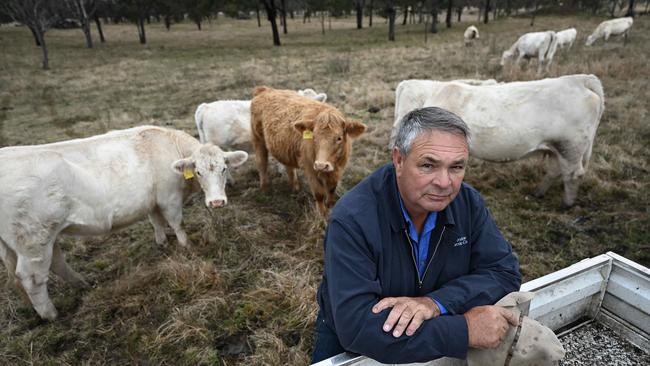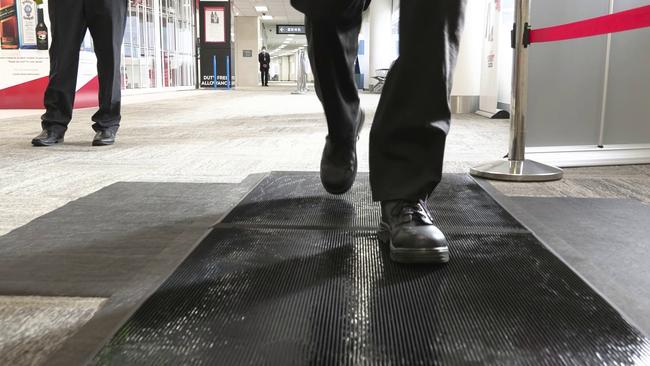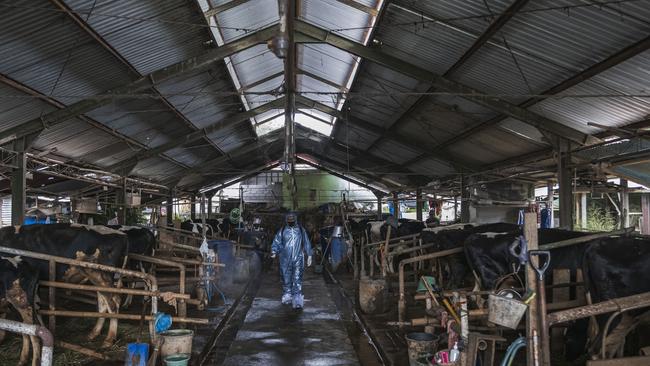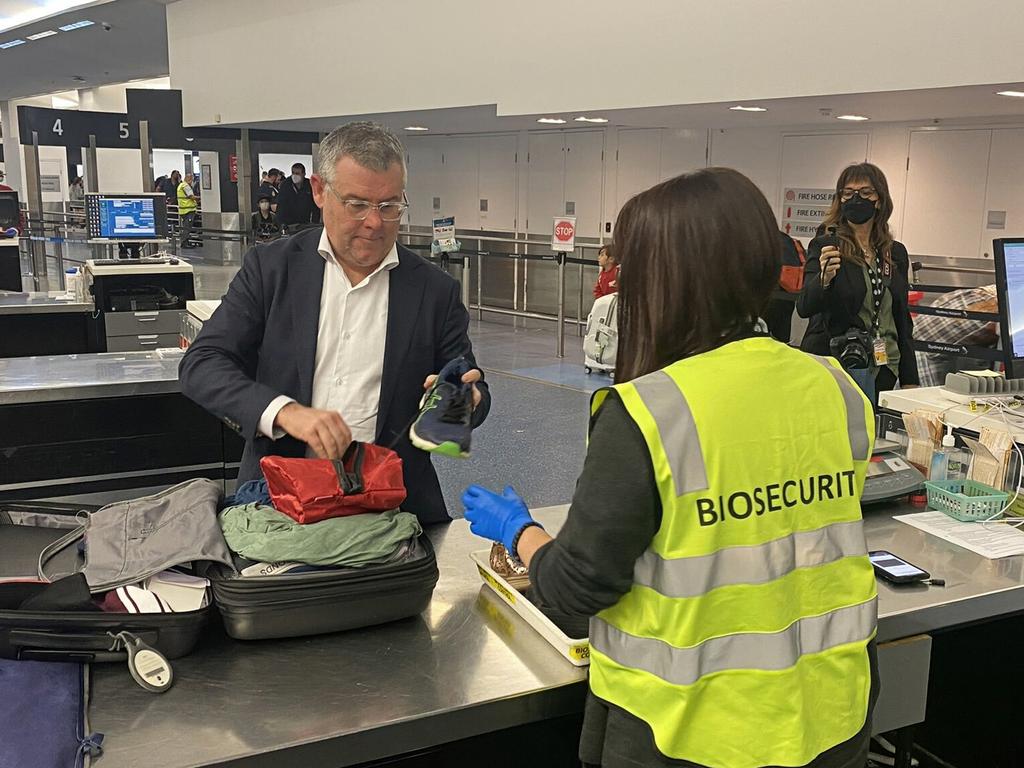The enemy at the farm gates
Foot-and-mouth disease is not the only virus circulating on our doorstep with the potential to bring Australia’s livestock industry to its knees.

Cattleman Ian Bebbington has never known a more confronting time for Australia’s livestock industry. Like most in the beef trade, the Charolais stud owner from Queensland’s Darling Downs has been enjoying the benefits of a welcome succession of good seasons.
But at a time when he’s getting the best prices in a generation, and the pastures are green and lush, Bebbington’s livelihood is facing its most perilous threat. And it’s coming on two fronts.
In May it was confirmed that the dreaded foot-and-mouth disease had hit Indonesia, and earlier this month it reached Bali.
But foot-and-mouth disease is not the only virus circulating on our doorstep with the potential to bring Australia’s livestock industry to its knees.
Previously limited to Africa, the lesser-known lumpy skin disease has spread rapidly through Asia over the past three years and was detected on the Indonesian island of Sumatra in March.
Experts say lumpy skin is even more likely to make its way into Australia at some point within the next five years because of the way it is spread by mosquitoes, which can be blown across islands and oceans.
Modelling by the Centre of Excellence for Biosecurity Analysis shows an 11.6 per cent chance of a foot-and-mouth disease outbreak in Australia in the next five years. A lumpy skin disease outbreak has a 28 per cent chance. While, unlike foot-and-mouth, lumpy skin does not affect sheep, goats or pigs, its similar effect on cattle has the industry doubly worried.
The twin disease threat has led to fierce debate in the media, farm paddocks and in parliament about how to protect the $70bn agriculture industry.
Cambooya-based Bebbington surprises himself by saying the government is “doing not too bad a job” at ramping up biosecurity.
“A lot of people were saying we should stop people from travelling but, at the same time, you don’t want to put the Indonesians off-side,” he says.
On the other hand, Bebbington wants to protect his livelihood and 130 carefully selected breeders.
“We’re already taking precautions here,” he says. “We’re making sure anyone who comes on to our place hasn’t been to Indonesia for the past 30 days. We’re not taking any risks.”
He remembers the Brucellosis-induced culls of cattle his dad faced, but said it’s nothing like the sheer threat posed by foot-and-mouth disease.

Being an island nation has traditionally provided the perfect protection for Australia against a range of diseases that have wiped out industries around the world and that, coupled with notoriously strict biosecurity controls, means Australian farmers have been able to proceed in relative harmony, the nation’s “disease-free” status yielding premium prices and unfettered access to global markets. But the Covid-19 pandemic has shown the world is a small place.
The Australian Bureau of Agricultural and Resource Economics and Sciences has estimated the cost of a widespread outbreak to be $80bn over a decade, prompting calls for extreme preventive measures including targeted border closures.
To some, the idea that the viruses can be blown over on the wind or brought in on the bottom of a tourist’s shoe makes it seem like a foregone conclusion Australia is about to lose its coveted “disease-free” tag. However, as industry leaders have strived to remind panicked farmers over the past month, the diseases aren’t here yet and there are decades’ worth of plans in place to ensure it stays that way.
A buffer of protective measures is in position to aid in prevention, early detection and eradication of diseases. International animal health expert Dr Phoebe Readford, from the CSIRO’s Australian Centre for Disease Preparedness, describes the biosecurity measures as “pre-border, at-border and post-border”.
Readford and her team have spent years working in neighbouring countries to help them prevent and control infectious diseases.
“If they can do that, then that means the disease level is lower and the risk to Australia is lower,” Readford says.
“Over the last three to four years, there’s been a significant change in animal disease status across Southeast Asia with a range of diseases. Lumpy skin, for example, has been in Europe and Africa for decades, and then suddenly, in 2019 we’re seeing it China and now Indonesia. That changes the ball game for us.”
As the diseases have spread, ACDP staff in Indonesia, East Timor and Papua New Guinea have helped build diagnostic tools so their governments can identify disease arrivals and respond quickly. Australia has also assisted Indonesia in its control efforts, including an ongoing vaccination rollout. Starting next week, a million Australian foot-and-mouth vaccines are due to arrive in Indonesia.
So far, almost 700,000 vaccine doses have been injected in farm animals across Indonesia, but it’s a tiny fraction of the country’s 18 million cattle.
In a country where a 10sq/km area can have up to 10,000 farmers with one or two cattle each, controlling a highly infectious disease poses a significant challenge.
While foot-and-mouth and lumpy skin are yet to reach East Timor and PNG, modelling has shown insects carrying the virus could readily be blown east from Indonesia to neighbouring countries and into northern Australia.

“The reason that we worry about lumpy skin disease is because of the way that it spreads, which is different to foot-and-mouth disease,” Readford says.
“So the difference is that we’ve got much less ability to control the movement of insects than we do to control the movement of people.”
Like foot-and-mouth, lumpy skin has a low mortality rate but causes significant production losses in beef and dairy cattle, and spreads rapidly through herds.
Once in northern Australia, the virus could infect cattle scattered across vast stations and get into the country’s 200,000-strong population of feral water buffalo.
The airborne nature of the virus has some in the industry worried that one big cyclone over summer could send hordes of lumpy skin disease-carrying mosquitoes into northern Australia.
In reality, it is more complex.
As Jason Strong from Meat and Livestock Australia points out, malaria, which is also carried by mosquitoes, has been in closer proximity to Australia for many years but the mainland has remained malaria-free since 1981.
Key to its early detection and possible eradication is a buffer of sentinel herds scattered throughout East Timor, PNG and northern Australia. The herds, which play a similar role to sentinel bee hives in place at ports, are usually small groups of 10 to 20 cattle that are regularly examined for disease.
There are more than 90 sentinel cattle herds throughout Australia, but when it comes to lumpy skin disease, it’s those in the north that are most important.
A conundrum for the industry is the need to increase awareness about the diseases and the role everyone plays in preventing their spread without whipping up hysteria.
Strong says overblown statements have made it difficult to ensure the industry remains alert but not alarmed.
“The chance of FMD getting here is not that different to what it was two weeks ago, two months ago, two years ago,” Strong says.
“So we should be aware, we should be concerned, we should be very well prepared, but we shouldn’t be driving extreme levels of concern, panic and anxiety.
“There’s plenty of countries in the world that have foot-and-mouth disease that we have planes coming in and out of each day and we don’t have the same level of concern about them.”
Still, Strong says, vigilance and constant improvement are essential.
“Every day we should be making sure that we’re doing everything we can … to strengthen our position,” he says. “We should also have confidence that we’re good at this. This is what we’ve been doing for a long time.”
Strong likens the national mood to jitters before a sporting match.
“We’ve got a lot of nervous energy,” he says. “Let’s make sure we implement the right things and let’s make sure we don’t implement things which are unnecessary or actually unhelpful.”
Among the suggestions deemed “unnecessary” have been calls, mainly from the federal opposition but also from some sectors of the livestock industry, for flights from Indonesia to be stopped. The government has resisted the option, citing impacts on Australia’s $17bn trade relationship with Indonesia.

The calls have been widely rejected by experts, including Australia’s chief veterinary officer, Mark Schipp, and industry associations including the National Farmers Federation, Australian Meat Industry Council, Cattle Council of Australia, Sheep Producers Australia, Australian Lot Feeders Association and Australian Livestock Exporters Council.
While there has been much concern about travellers from Indonesia bringing the diseases into the country in mud on their feet, experts say the more likely transmission method is through imported food products contaminated with the virus being fed to pigs.
Illegal “swill” feeding is believed to be behind the devastating 2001 foot-and-mouth disease outbreak in Britain, which resulted in the culling of six million animals to control the disease.
Australian biosecurity officials have started scanning all inbound parcels from Indonesia and China, as opposed to a usual sample, to identify potential biosecurity threats. But even with increased overseas vaccinations and control measures, and a veritable wall of biosecurity officers, scanners, sentinel herds and rangers, there’s still those 11.6 and 28 per cent probabilities of arrival.
That’s where the Ausvetplan comes in. In place for decades, the blueprint outlines the country’s response, from an immediate 72-hour standstill of all livestock, to potential culling and vaccination.
Australia has access to international banks of foot-and-mouth and lumpy skin vaccines, but stopping the viruses once they get here is not as simple as inoculation. Vaccination with a live virus would render the country’s disease-free status obsolete and international trade laws prohibit the exporting of meat products from countries with the diseases to those without.
Readford says the Ausvetplan puts Australia in a better place to confront the threat than most countries.

“For a country like Indonesia … they’re still making decisions now. Do we vaccinate? How do we control it?” Readford says. “A lot of those decisions, if not all of them, Australia’s already made them.”
Even with that plan in place, Agriculture Minister Murray Watt has been working to beef up the country’s biosecurity response, including a $14m package announced two weeks ago.
“We have implemented the strongest biosecurity response to an overseas threat in Australian history,” Watt says.
“Expert assistance has been provided to our Indonesian counterparts to help get the outbreak under control, as well as providing delivery of one million FMD vaccines.
“We have more biosecurity officers, detector dogs, sanitisation foot mats at airports, Biosecurity Response Zones, 100 per cent screening of mail from Indonesia and China and 100 per cent risk profiling of returned passengers from Bali. We are working night and day on even more measures to help prevent FMD from entering our country.”








To join the conversation, please log in. Don't have an account? Register
Join the conversation, you are commenting as Logout